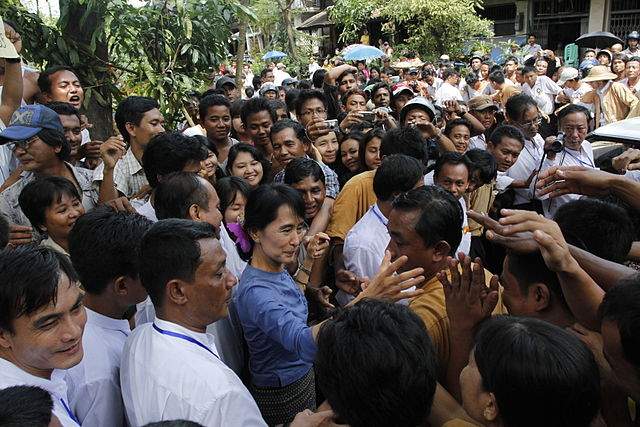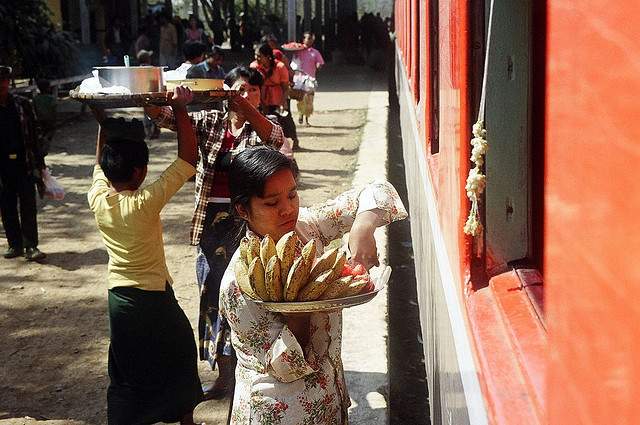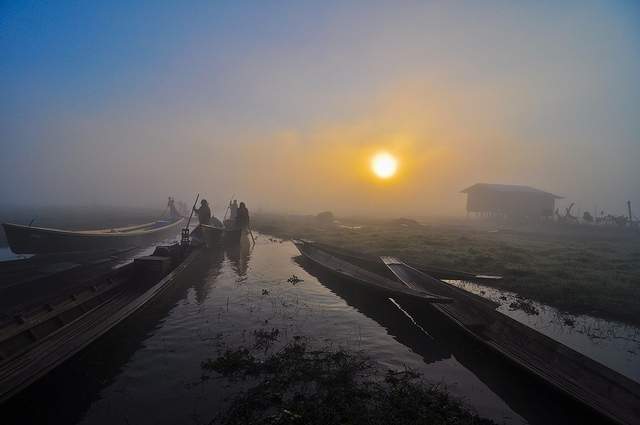Decades of deservedly critical press warning travelers to stay away from Burma is finally giving way to encouraging signs for the country’s future. After historic elections passing power from the military junta to a civilian government, and the release of leading democracy activist Aung San Suu Kyi from more than twenty years of house arrest, Burma is finally open for business, and the green light is on for tourists to come and support its transformation.
Such a long time spent staying away means many still have niggling doubts, but there are plenty of reasons why now really is the time to visit this stunning, until now isolated country that has so much to offer the indie traveler in search of a destination perhaps like no other they’ve seen before.
The politics

The release of Suu Kyi, who holds great respect and popularity amongst Myanmar’s population, is the striking signal of change in Burma, making the country more democratic and more palatable to the conscience of western visitors. The release of political prisoners was one of the main conditions set for the easing of economic sanctions, and apart from Suu Kyi, other high-profile dissidents have been released. Among them are students involved in protests in 1988, monks who protested in 2007, and activists from Burma’s many ethnic minorities.
The United States and Burma have also begun the process of exchanging ambassadors for the first time since 1990, and Suu Kyi has won the seat she stood for – it is the first time she has contested political power since her National League for Democracy won the 1990 general election by a landslide but were prevented by the military from ever taking office.
The NLD would welcome visitors who are keen to promote the welfare of the common people and the conservation of the environment.
A ceasefire has been signed between the government and the Karen National Union, representing the ethnic minority group whose insurgency struggles since independence from British rule in 1948 have seen the country gripped by civil war and civilians deliberately targeted, driven from their homes and forced to work for the army, their villages destroyed.
With such flagrant human rights abuses taking place across the country, the NLD under Suu Kyi has long pursued a boycott of tourism on the grounds that it would politically justify and economically feed a corrupt, undemocratic state fighting its own people. But in view of the changes taking place, the NLD now welcomes what it calls “responsible tourism;” one that benefits rather than harms local people.
For the most part this means traveling independently rather than as part of an organized tour group and doing what we can to ensure that our money goes to locals rather than into government and military coffers, which can come in convincing disguise. “The NLD would welcome visitors who are keen to promote the welfare of the common people and the conservation of the environment and to acquire an insight into the cultural, political, and social life of the country while enjoying a happy and fulfilling holiday in Burma,” said the party in its statement.
The practicalities

Clearly it is still early days in Burma’s moves towards democratization, and the development of the rights of its population, but changes have nonetheless been dramatic and fast moving. Many believe that 2012 will prove to be a big year for Myanmar’s tourist industry. Though the 816,319 tourist visits to the country in 2011 remains dwarfed by the region’s big players, like Thailand with its fast approaching twenty million annual visits and almost twenty-five million in Malaysia, Burma has already seen some 400,000 arrivals in the first two months of 2012.
On a practical note, too, Burma is upping the ante. It has announced the introduction of electronic visa applications from March 2012, which “would allow international visitors to apply for a visa from anywhere via the internet before visiting.” Such a system would put Myanmar on par with Cambodia, which already uses an e-visa scheme.
Regional commentators see a developing Burma as the biggest competitor to Thailand’s tourist industry.
It is thought that this kind of liberalization of visa procedures could further help increase the country’s tourist figures. Certainly, it would put Myanmar leaps ahead of the likes of Thailand and Malaysia, otherwise seen as regional heavyweights, neither of which currently offers an online application service. Both offer thirty to ninety-day visa-free stays to visitors of many nationalities, but those wishing to stay longer are forced into lengthy and bureaucratic, paper-based application procedures.
Indeed, the worst news in the development of Myanmar’s tourist industry is probably for the likes of Thailand, set to lose out in competition. Tourism bosses have already claimed that Thailand needs to refresh its offering if it is to stay ahead of regional rivals, rather than resting on its laurels by selling “the same old products” of beaches and islands. “Other countries in the region are promoting [an] identical experience,” said President of the Association of Thai Travel Agents, Sisdivachr Cheewarattanaporn.
Regional commentators see a developing Burma as the biggest competitor to Thailand’s tourist industry. Stuart McDonald, co-founder of online Southeast Asia travel guide Travelfish.org, tweeted in response to a news story about Mr Sisdivachr’s comments: “Burma really [is] opening, stable etc, [it is the] #1 threat to Thai tourism, especially in the Gulf.”
The sights

Of course, your ultimate reason for visiting Burma probably isn’t its political development, or the fact that it can offer you an electronic visa. Burma is a stunning country steeped in Buddhist tradition, and by virtue of its political problems, largely isolated and sheltered from the sorts of tourism growth and changes that neighboring Southeast Asian countries have experienced.
Mandalay, touted as the Burmese equivalent to the northern Thai cultural capital of Chiang Mai, is set to be a big draw for tourists. The last independent capital of Burma before the British conquest, Mandalay is, however, worlds away from Chiang Mai – horse-drawn carts still ply the streets of the city center, and poor road conditions are the norm. The iconic and photogenic U Bein bridge crops up in many a visitor’s snaps, and ancient cities and the Mingun temples provide plenty for travelers to see here.
The last independent capital of Burma before the British conquest, Mandalay is, however, worlds away from Chiang Mai – horse-drawn carts still ply the streets of the city center.
Elsewhere, picturesque Lake Inle is already drawing in the crowds, and the old capital city of Rangoon, well worth a visit, will be the first stop on most itineraries. A trekking scene is developing in the Shan ethic group’s tribal villages around hill stations like Kalaw, up in the mountains, and historical sites such as the expansive cave temples at Pindaya, with their sheer number of incredible Buddha images that easily trump similar sights in both neighboring Thailand and Laos, are another draw.
As Burma moves to a new period of what everyone hopes will be more stable politics, the development of its appeal and success as a tourist destination is inevitable. What is also inevitably is that the country will quickly change beyond recognition over the five or ten years to come – meaning that, without a shadow of a doubt, it’s now or never.
To read more on traveling in Burma (Myanmar), check out the following articles and resources:
- 8 Reasons to Fall in Love with Burma
- Check out our Burma Indie Travel Guide
- Read Indie Travel in Myanmar for $45 Per Day
- 12 Less Visited Countries and Why You Should Go There Now
- The Many Weird Fruits of Southeast Asia

Photo credits: Htoo Ty Zar, yeowutzup, Mark Fischer